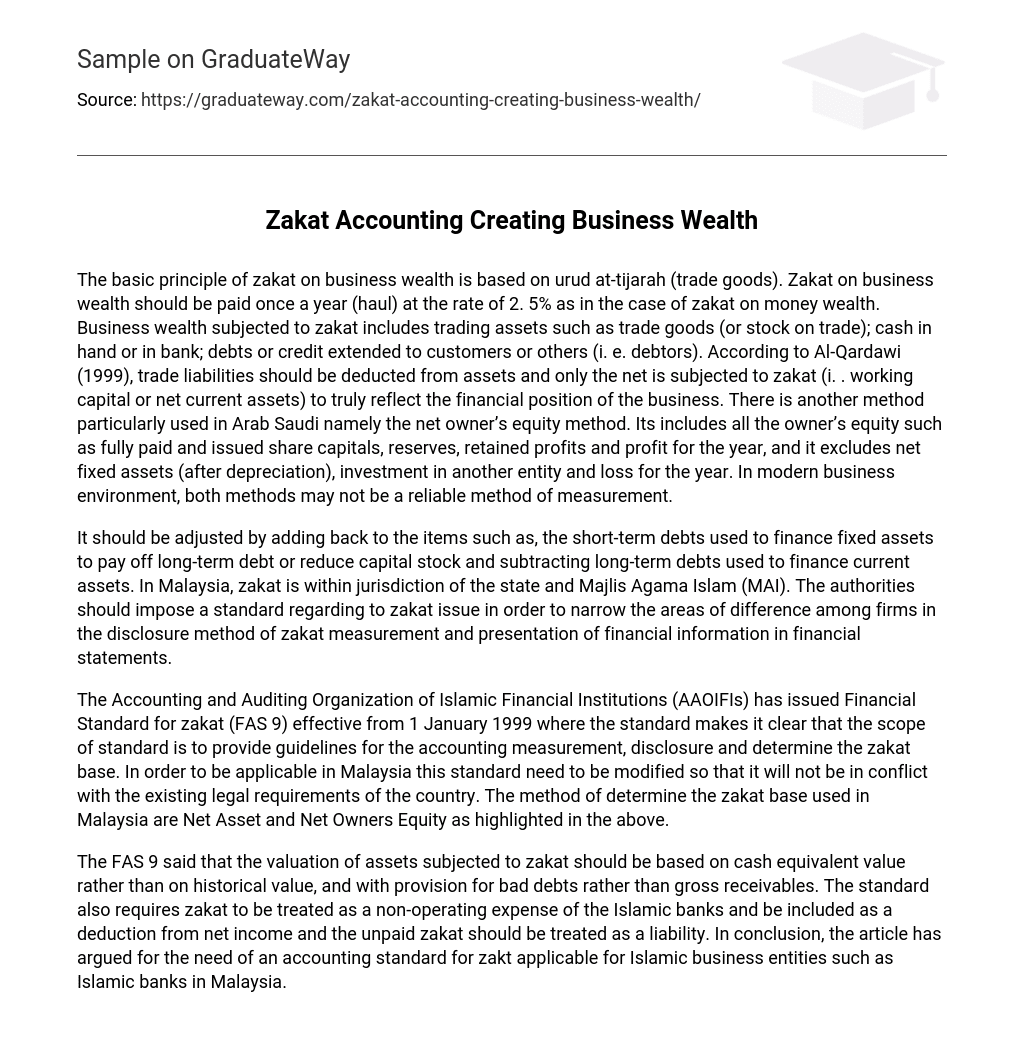The basic principle of zakat on business wealth is based on urud at-tijarah (trade goods). Zakat on business wealth should be paid once a year (haul) at the rate of 2. 5% as in the case of zakat on money wealth. Business wealth subjected to zakat includes trading assets such as trade goods (or stock on trade); cash in hand or in bank; debts or credit extended to customers or others (i. e. debtors). According to Al-Qardawi (1999), trade liabilities should be deducted from assets and only the net is subjected to zakat (i. . working capital or net current assets) to truly reflect the financial position of the business. There is another method particularly used in Arab Saudi namely the net owner’s equity method. Its includes all the owner’s equity such as fully paid and issued share capitals, reserves, retained profits and profit for the year, and it excludes net fixed assets (after depreciation), investment in another entity and loss for the year. In modern business environment, both methods may not be a reliable method of measurement.
It should be adjusted by adding back to the items such as, the short-term debts used to finance fixed assets to pay off long-term debt or reduce capital stock and subtracting long-term debts used to finance current assets. In Malaysia, zakat is within jurisdiction of the state and Majlis Agama Islam (MAI). The authorities should impose a standard regarding to zakat issue in order to narrow the areas of difference among firms in the disclosure method of zakat measurement and presentation of financial information in financial statements.
The Accounting and Auditing Organization of Islamic Financial Institutions (AAOIFIs) has issued Financial Standard for zakat (FAS 9) effective from 1 January 1999 where the standard makes it clear that the scope of standard is to provide guidelines for the accounting measurement, disclosure and determine the zakat base. In order to be applicable in Malaysia this standard need to be modified so that it will not be in conflict with the existing legal requirements of the country. The method of determine the zakat base used in Malaysia are Net Asset and Net Owners Equity as highlighted in the above.
The FAS 9 said that the valuation of assets subjected to zakat should be based on cash equivalent value rather than on historical value, and with provision for bad debts rather than gross receivables. The standard also requires zakat to be treated as a non-operating expense of the Islamic banks and be included as a deduction from net income and the unpaid zakat should be treated as a liability. In conclusion, the article has argued for the need of an accounting standard for zakt applicable for Islamic business entities such as Islamic banks in Malaysia.





